What to Expect From Google Meet in 2021
When the Covid-19 struck, the need for quality video conferencing apps became immediate.
Schools shut down, and the only way for teachers and students to connect was through online classrooms. Zoom, Microsoft Teams, and Google Meet attacked these needs and took the lion's share of the video conferencing market.
They didn't stop there and have continued to improve. Here's what you can expect from Google Meet this year.
What's New in Google Meet in 2021?
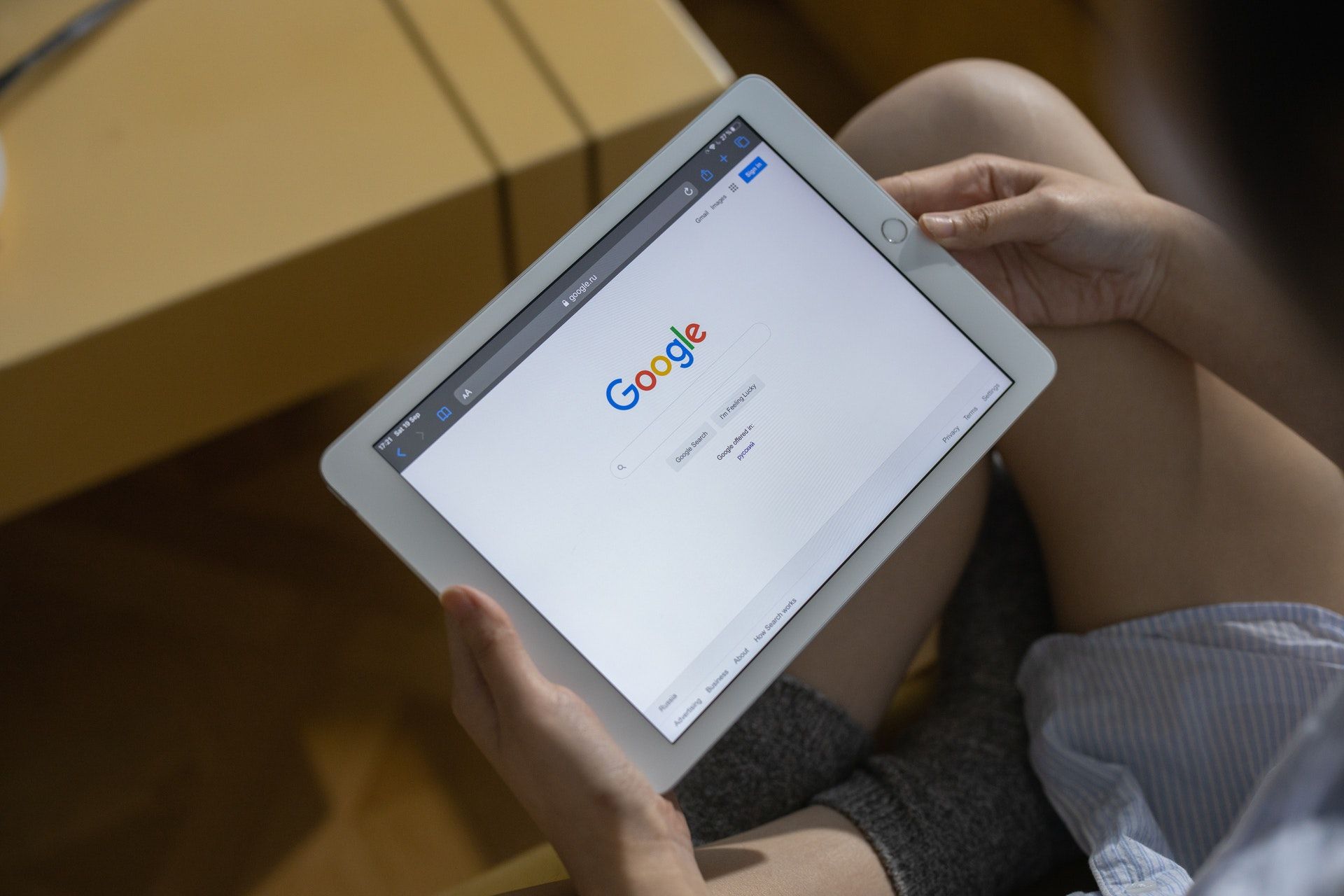
Numbers tell the story. Data by CodeinWP says, Zoom leads with 300 million users, Microsoft Teams has about 115 million users, while Google Meet has 100 million users. From these data estimates, Google Meet feels like the underdog. But is it?
In 2021, Google Meet has released new features to meet our needs. The latest features give you more privacy, convenience, efficiency, and overall ease of use.
1. New Caption Languages for Mobile
Earlier you could only have captions in English. Now, Google Meet has multilingual captions that include Spanish, French, German, and Portuguese languages.
Captions can help you work effectively with a global team. They are also convenient for persons with hearing conditions and meeting in noisy environments. This feature is only available in Europe and the Asia Pacific but will come to other regions in the near future.
2. Tile View on iOS and Android

To deliver a consistent user experience across platforms, Google has rolled out tile view on both iOS and Android. You can now see up to eight participants in one screen, with more members indicated on the lower right screen as "X others." It's excellent, especially when you don't want a screen change when someone new speaks.
The current speaker has an audio icon on the top right of their picture tile. Once you update your app to the latest version, it will automatically update the function. As more users join the meeting, the value of "X others" increases to indicate the current number of attendees that do not appear on the mobile screen. The iOS iPad layout can include a maximum of 48 users with an 8×6 layout.
3. Mute-All Audience to Help Teachers Manage Classes
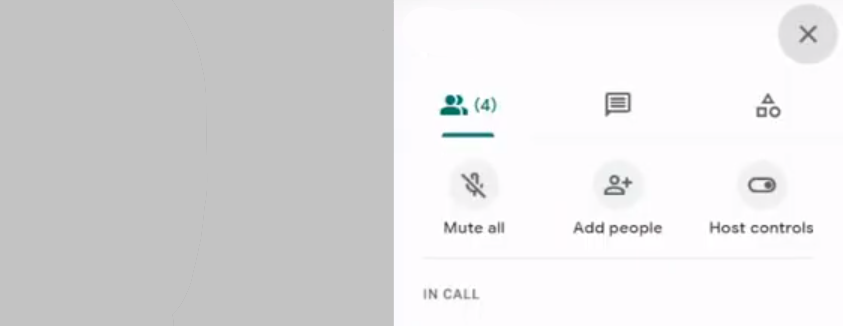
Virtual classrooms can get chaotic just like an indisciplined real-world one. But, with the Mute-all feature, teachers can revoke audio privileges from the entire classroom and ascertain more orderly classroom proceedings.
This feature is equally effective in board meetings, company briefings, or any other sizable virtual conference on Meet, where a moderator wishes to take control of the session while avoiding member disruptions.
Alternatively, you can use this Mute All Chrome Extension.
4. Breakout Rooms
As the name suggests, a larger meeting could suddenly feel the need to break into smaller cohorts.
Breakout rooms create smaller rooms to discuss topics within a time limit set by a moderator. For better cohesion in the proceedings, members in the Breakout room could assign a single spokesperson to reduce crosstalk from participants in the main meeting space.
The moderator can assign members specific Breakout rooms through Google Calendar before the actual meeting happens.
5. Polling Options
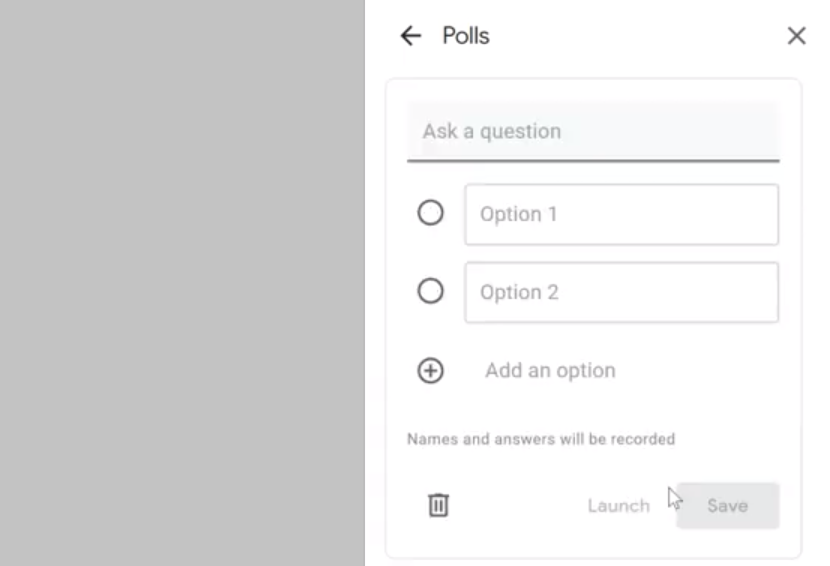
Google Meet now allows you to collect data from poll surveys. The right to create a poll lies with the meeting moderator, while members can only participate in a poll. The voting lasts for the entire duration of the meeting or until the moderator ends it.
Once the responses/votes are given, the moderator gets an email with the names and poll results at the end of the meeting. The moderator status is earned by starting the meeting, having the meeting transferred to you, or having the meeting scheduled on your Google Calendar. Polling is only available on paid Google Workspace packages.
6. Q&A Channel
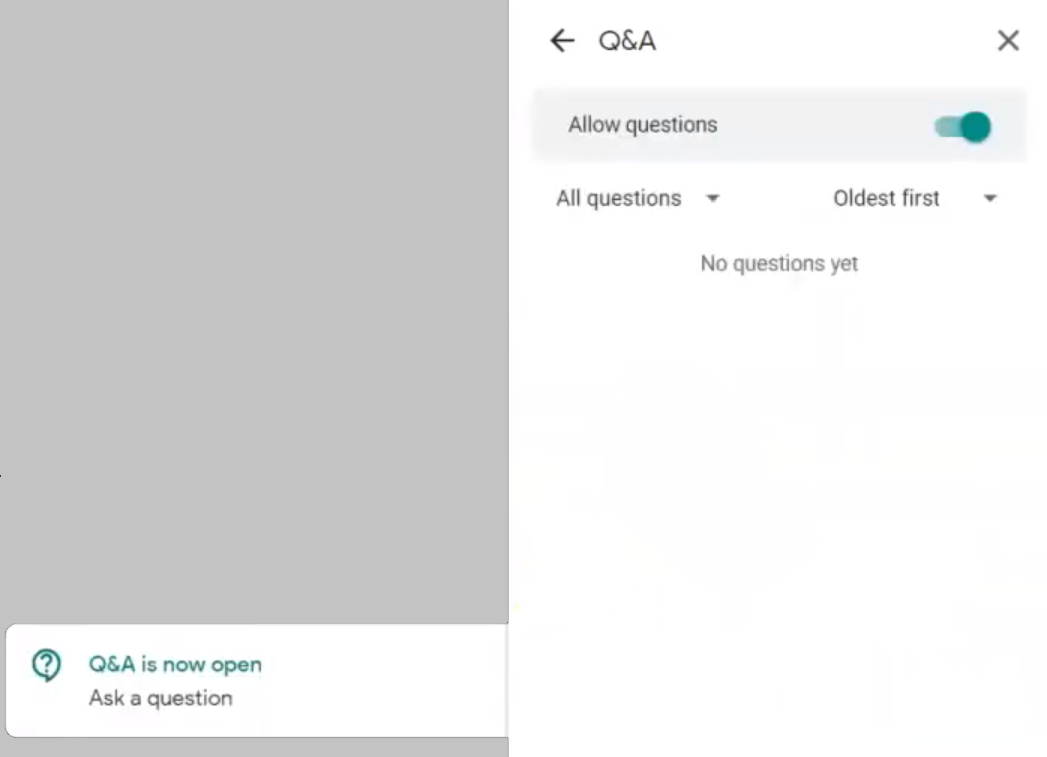
Questions are an integral part of meetings. The Q&A channel allows members to post questions during an ongoing session, without interrupting the proceedings.
Participants' rights are limited to posting questions, viewing all posted questions, upvoting already existing questions in order to boost their priority status, and deleting questions they've posted themselves.
On the other hand, moderators have the right to view posted questions, upvoting, deleting, or hiding questions posted by participants, and marking a question as answered. A post-meeting audit of the questions posed during the meeting is sent to the moderator. The feature is available in Workspace, Business, Enterprise, and Educational packages.
7. End Meeting For All
Educators have liked the End Meeting for All addition to Meet. Work meetings come to a natural halt with the completion of agendas, and participants are allowed to leave at their discretion.
Much like the end of an on-site lesson, virtual classrooms can spiral out of control with the teacher's exit. It is unethical to leave students in an online forum unsupervised, and Google's brilliant new End Meeting for All feature grants teachers the ability to remove all participants from a meeting once it's over.
This feature is only available for Google Workspace For Education Fundamentals and Google Workspace for Education Plus.
8. Block Out Unknown Users

Zoombombing is especially rampant with online classes where teachers sent out free links, and anyone with the link could join the classroom.
Google Meet introduced the Block Out Unknown/ Anonymous Users as an extra security feature to counter zoombombing and keep virtual spaces safe.
This feature is available for G Suite Educational Accounts and G Suite Enterprise Accounts for educational subscribers. Members that are not signed in to their Google Accounts and if their Google account is not registered to the host organization are automatically blocked from accessing the rooms, even with an active link.
9. Preview How You Look and Sound
Before facing your audience, you can preview how you look and sound to your audience. Google Meet now has a green room where you can prepare yourself before inviting your audience into Meet.
Use this virtual "green room" to rehearse your words, your facial expressions and pick a tone that will convey your message most effectively. Prepare and present your best self to your audience.
Before starting a meeting, a tab will appear asking you to "Check your audio and video". Self-check them and proceed.
10. Reactions With Emojis and GIFs
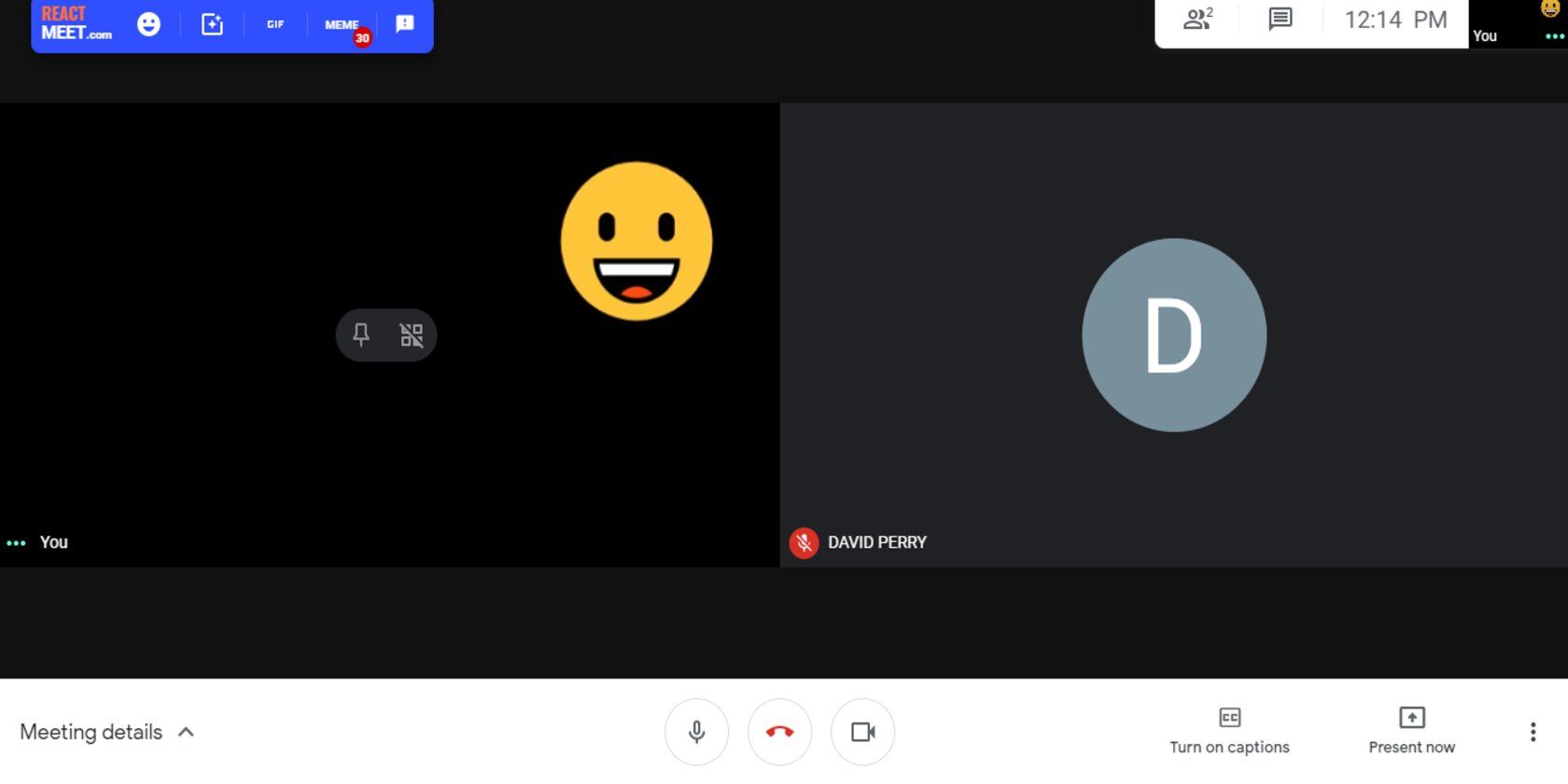
Emojis and GIFs are part of modern-day communication, and it is only natural that Google added the features to Meet. Your audience can now post reactions using these nifty emoticons for faster and non-interruptive reactions.
The reactions are large and visible in tiled or grid view, except when the video off function is turned on. The emojis aren't built-in. Users need to have the Chrome extension installed to post or view the emojis.
Google Meet Gets Better in 2021
Google wants to offer its clients the most seamless experience in these times of extreme change. Your audience will be engaged throughout the meetup, communicate their questions and reactions in a timely and orderly fashion. Meet will also curate reports for post-meeting analysis and record keeping. What more could we ask for?
With every update, Google Meet continues to prove itself as a seamless, intuitive, and fantastic tool for collaboration and learning in these pandemic times.
source https://www.makeuseof.com/what-to-expect-from-google-meet-in-2021/



Post a Comment for "What to Expect From Google Meet in 2021"
Comment when there are difficulties